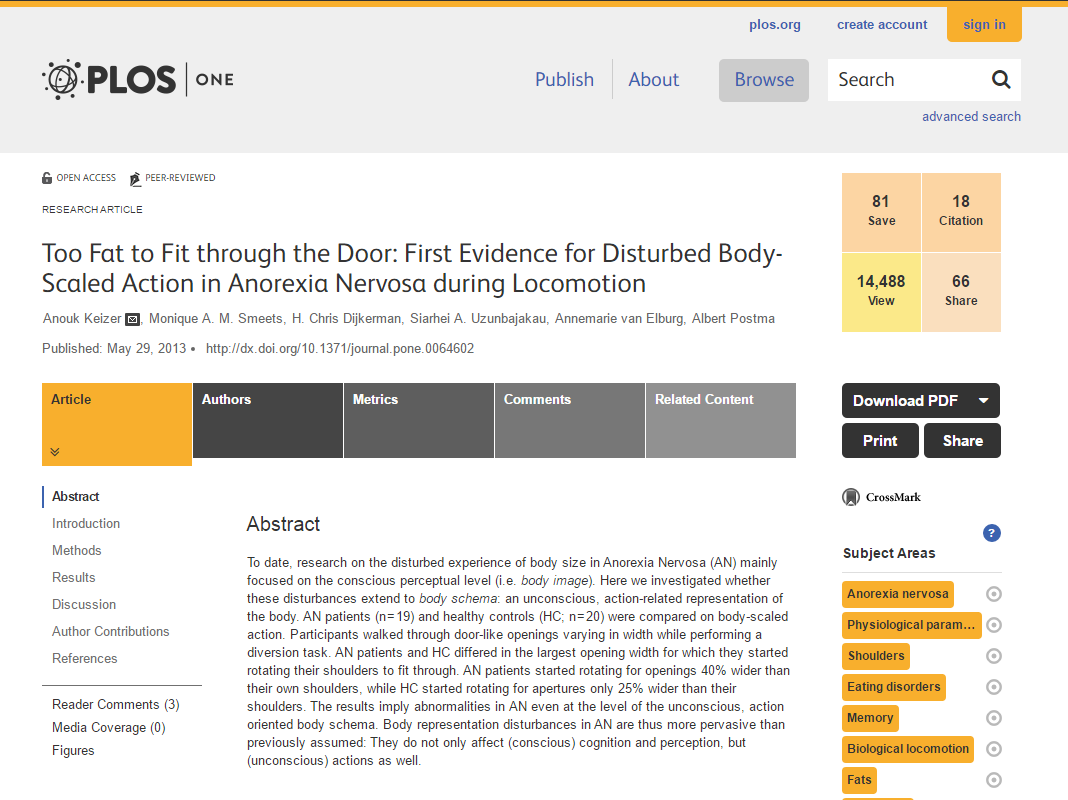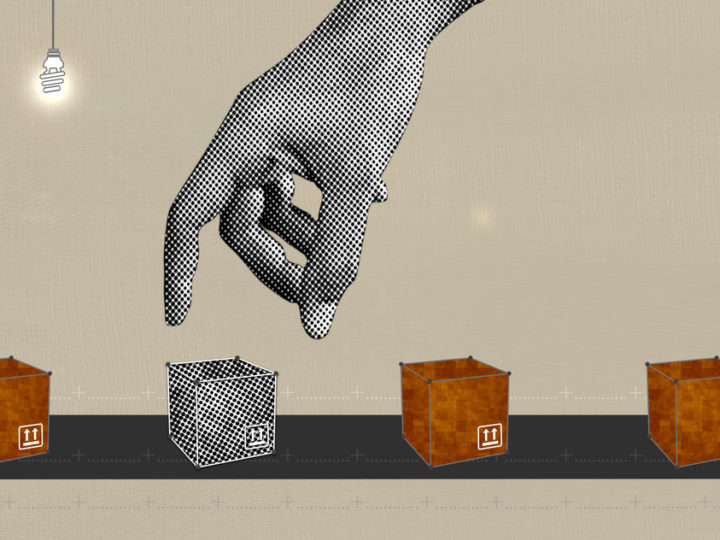Eating disorders are misunderstood.
They aren’t an intense diet or plan and they can take over a person’s life, mentally and physically. NAMI ( the National Alliance on Mental Illness) reports that around 1 in 20 people will be affected by an ED at some point in their lives.
Anorexia (AN) is a common eating disorder and it’s a condition where a person will literally starve themselves and over-exercise to lose weight. Because their goal is to get and stay thin by any means necessary. it’s a condition that is very extreme and incredibly motivated. Though not classified as an ED, body dysmorphic disorder (BDD) is a condition in which where a person will obsess over their physical appearance to a point of dysfunctionality.
BDD patients have a high risk of completed suicide, and AN has a higher mortality than any other psychiatric illness.
Scientists noticed the comorbidity rates of AN and BDD, or the rate at which they occur simultaneously. About a third of patients with one disorder also have the other. The disorders are very similar in symptoms, and one major connection is a distorted sense of perception. Research has found that AN and BDD aren’t just psychological disorders; they are neurological disorders as well. Scientists have spent much time comparing the findings from studies conducted, pertaining to both conditions individually, as well as collectively.
They found that both disorders tend to involve “over-attention to detail, reduced processing of larger global features… and [that patients] misperceive aspects of their own images.”
In one study, subjects with AN drew pictures starting with the details first, rather than a rough idea of the whole as the healthy controls did. Another study showed that subjects with BDD had trouble working with spatial memory tasks. The scientists also found both groups to have “visuospatial abnormalities… for non-appearance related stimuli.” A group with BDD specifically recalled details rather than overall organization features. Numerous groups with AN seemed to exhibit poor spatial awareness of themselves, as well as hyperattention to details of projects.
A group in The Netherlands published a paper expressing that people with AN have distortions in spatial perception.
Participants in their experiment were asked to perform a task, and on their way, walk through doorways or ‘panels’ of varying distances apart. Participants with AN rotated their shoulders to fit through the panels more often than healthy controls; they started rotating for openings 40% wider than their shoulders, as compared to healthy controls starting rotating at 25% wider. Patients with AN seemed to subconsciously believe themselves to be about 15% larger than they really were. Also, when asked to estimate the width of their shoulders by drawing a vertical line, after the first experiment took place, people with AN consistently overestimated their shoulder width.
“Interestingly, these results suggest that if AN patients’ shoulders were as wide as they estimated them to be, they would perform equal to HC on body-scaled action. This implies that stored information on body size is disturbed in AN, which in turn affects perception-related body image as well as action-related body schema representations.”
This also shows more than just a fixated mental perception distortion; it’s a physiological difference in brain hard-wiring. People with AN process things differently, specifically visual and spatial information. Like a filter, but one that they can’t get rid of just by being told that they’re wrong. It can be battled, and even altered, but it requires treatment and re-training.
A group at UCLA recently published findings directly confronting the visual processing similarities between BDD and AN.
They measured neurological activity when exposed to different types of visual stimuli, and “both [disorders] were linked to electrical activity occurring within the first 200 milliseconds after the person viewed an image.” The measured activity was greatest in the detail-processing regions of the brain. Dr. Feusner, senior author of the UCLA paper, explained “… The fact that the results were recorded while people were viewing other people’s faces and images of houses suggests that this may be a more general abnormality in visual processing.”
Wei Li, a student and author on the paper, said, “We now know that these abnormalities may be happening at the very early stages when the brain begins processing visual input, and that the similar distortions in perception shared by anorexia nervosa and body dysmorphic disorder may have similar neurological origins.”

A paper published a few months later again highlighted the similarities in brain abnormalities between the disorders, adding detail to specific regions regarding visual processing of faces.
They used fMRIs to observe connections in the brain while subjects viewed images. Higher activity and connections in specific areas was associated with greater symptom severity. One possible treatment, for both these disorders, could be perceptual retraining. “Perceptual retraining is a behavioral exercise that attempts to help adjust or correct the participant’s balance of global and detailed processing. For both of these disorders, participants are encouraged to not focus on details and process objects more globally.”
As studies continue, scientists, biological and psychological alike, can help improve treatment options. This helps make it easier for people dealing with real issues to have more normal lives. Being less focused on the details, and showing people how, could definitely help normalize things. AN and BDD affect a lot of people, but they don’t have to stop people from living.



